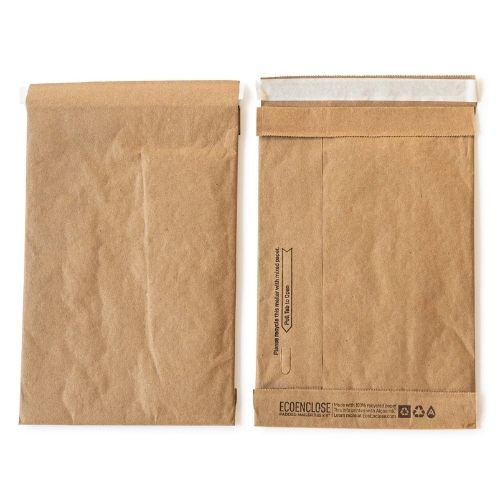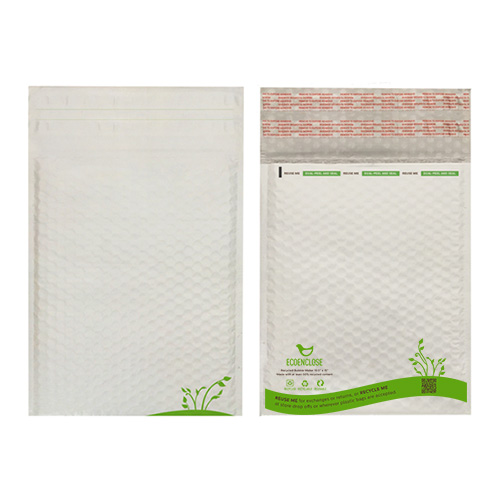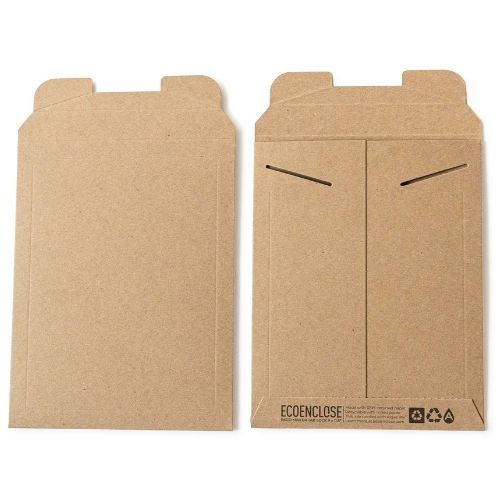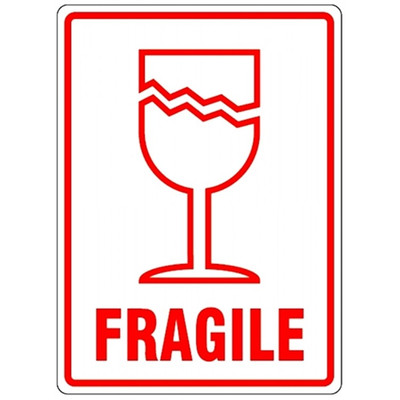Shipping Fragile Items: How to Package Your Breakables
Posted By on Sep 21st 2024
How to package fragile items for shipping
Shipping fragile items is an art, especially for eCommerce companies concerned about waste. Failure to package your products properly inconveniences the customer and causes a loss for your business. On the other hand, overusing packaging materials results in undue waste and challenges any sustainability claims your company may make. You must ensure that your products are securely packaged using the least amount possible.
As an eco-friendly packaging company, we’ve perfected this art form. Here are our top tips for shipping fragile items and our recommended eco-friendly packaging choices to ensure your products reach your customers intact.
Choose the proper box size
When shipping fragile items, you need to choose a box that’s large enough for adequate padding but small enough that it doesn’t need too much void fill to keep the product secure. We recommend using a shipping box 10-25% larger than the items you are packaging. The heavier and more fragile your items are, the more excess space you'll need for sufficient padding.
Don’t overload
Although consolidating packages is a top tip for sustainable shipping, it has limits. You shouldn’t individually package multiple items going to the same place, but you also shouldn’t overload your box past its carrying capacity. Going over the weight limits of your box could result in damage during transit. Additionally, if you have too many items in a single package, it’s challenging to provide ample padding for all of the items. While custom inserts can be a solution to this problem, you should still make sure that your boxes aren’t too heavy.
Protect the bottom of the box
It’s easy to forget that the bottom of the shipping box needs protection, too. We often get so involved with padding the sides and top of our shipping packages that we leave little or no padding on the bottom. When you protect the bottom of your shipping box, consider the product's weight, as it will condense the padding and make it less protective. Put extra padding down to make up for this issue.
Make sure the items don’t move
The key to packaging fragile items is security; the product should not be able to move within the shipping box. As you fill your box with padding, remember that void fill, such as paper shred, may shift and condense during shipping, so be sure to overfill your box with this type of padding to account for these changes.
Test your packaging
No matter how well you think you’ve protected your products, there’s probably something you’ve missed. Even the most reliable delivery services have bad days, and a small packaging oversight could result in a broken item. To feel confident in your packaging strategies, test them before sending your products to your customers.
First, develop your own "drop test.” Package your product how you intend to ship it and then absolutely abuse it. Drop it from the top of a table. Throw it in the air and let it crash. Place a heavy box or two on top of it. Once you’ve sufficiently mishandled it, open it up and see how your contents fared.
After your in-house test, ship a few packages to people you trust who can report on shipping success or failure. This will either confirm that your packaging approach works or identify areas of weakness.
Here is a video of our team testing the efficacy of a custom insert design to ensure it would adequately protect the package's contents.
Worry about packaging first and labeling second
So, what about labeling? Do “fragile” and “do not bend” stickers make a difference?
The short answer is no. While these stickers don't necessarily hurt, they only go so far in helping your package get special treatment. Your package is often handled through highly automated equipment, meaning no one is actually reading and responding to these stickers. Additionally, workers move through boxes so rapidly that they will likely miss any "fragile" labeling.
Ultimately, carriers emphasize that any labeling should be done as a secondary step. The first and most crucial step is properly packaging and protecting your goods.
Eco-friendly packaging for your fragile items
Now that we’ve covered the “how,” it’s time to cover the “what.” Here are our sustainable packaging recommendations for shipping fragile items.

Custom shipping boxes
Suitable for: Bulky items, larger shipments, items that need more protection than a mailer
Custom shipping boxes are a great choice when shipping fragile items.
By choosing your box size, style, and other specifications, you can ensure that you offer a Goldilocks fit that is not too big or small.
Our Custom Shipping Boxes are made with 100% recycled materials, with eight different styles of various strengths and thicknesses.
We can even add your company’s branding using HydroSoy or Algae Ink so that you can create a gorgeous unboxing experience in an eco-friendly box.

Void fill
Suitable for: Breakable bottles, candles, especially bulky items. A great solution when each of your shipments is varied, and you need a single packaging solution to work with various shipments.
Void fill can be a great way to add padding to your shipping box.
Use Flexi-Hex Air Sleeves, GreenWrap, Packing Paper, or Slivv Paper Transport Sleeves to wrap your items.
Alternatively, line your box with Corrugated Bubble, Ornament Paper Shred, or SpiroPack Nest Eco, then place your goods into the lined box and add the same void fill on top.
Ensure your box's contents are snug and won't move before you seal it.

Custom inserts
Suitable for: Smaller bottles (such as Boston Rounds), perfumes, essential oils
Custom inserts are a great option when shipping fragile items without sacrificing presentation. It can also be ideal if you have a lot of consistency in what you ship, such as bottles of essential oil or jars of jelly.
Please note that in most cases, custom inserts are not enough to protect fragile items fully. We often recommend a layer of void fill above and below your inserts, such as Corrugated Pads or Packing Paper. When shipping fragile products, you can’t be too careful in ensuring your customers have an excellent unboxing experience.
Interested in custom inserts? While these are not available for purchase through our website, we'd love to find a solution for your business. Contact us to discuss our high-volume capabilities.


Cushioned mailers
Suitable for: Lightweight and thin, delicate items such as jewelry, small essential oil or perfume bottles
If you are shipping something thin and lightweight that is delicate and somewhat fragile, a cushioned, protective mailer can do the trick without the cost and operational headache of a shipping box.
We offer Padded Mailers (made of 100% recycled paper, curbside recyclable at end of life) and Bubble Mailers (made of recycled plastic, thin-film recyclable at end of life). Both mailers offer additional cushioning and protection for fragile items.
Small vials of perfume, 1 oz bottles of essential oils, and lightweight jewelry can travel very well in a cushioned, protective mailer like this.

Rigid mailer
Suitable for: Art prints
Art prints aren't technically "fragile," but you still don’t want them to be bent in transit.
If you are shipping art prints and want to ensure they stay flat and protected, we recommend Extra Rigid Tab Locking Mailers that are too thick and strong for anyone to bend or crush, even if they want to.
These mailers require a layer of Packing Tape to seal them because the paperboard is too thick and rigid for self-seals to work effectively.
Find a partner with EcoEnclose
Shipping fragile items can be daunting. But you don’t have to figure it out alone. If you feel a bit lost, contact us at hello@ecoenclose.com, and we’ll help you develop a fragile shipping strategy specific to your products and business.
About EcoEnclose
EcoEnclose is the leading sustainable packaging company that provides eco-packaging solutions to the world’s most forward-thinking brands.
We develop diverse, sustainable packaging solutions that meet our rigorous research-based standards and customers’ goals. We drive innovative packaging materials to market and consistently improve the circularity of existing solutions.


